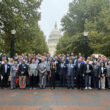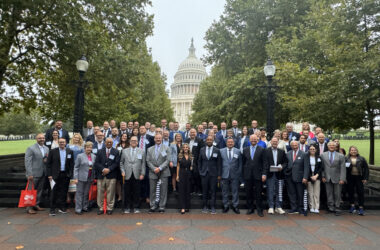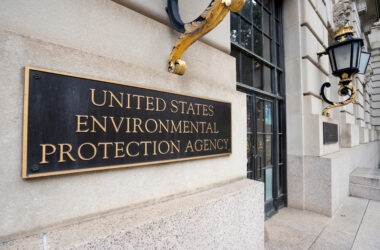Interest rates are once again increasing.
After issuing a pause to rate hikes in June, the Federal Reserve Wednesday raised the target range for funds again by 25 basis points to 5.25 percent to 5.5 percent. It’s the highest level for rates since January 2001.
The hike is the 11th in 16 months. The Federal Reserve has raised rates in that time by 525 basis points.
“Since early last year, the FOMC has significantly tightened the stance of monetary policy,” said Jerome Powell, Federal Reserve Chairman. “Today, we took another step by raising our policy interest rate 1/4 percentage point, and we are continuing to reduce our securities holdings at a brisk pace. We have covered a lot of ground, and the full effects of our tightening have yet to be felt. Looking ahead, we will continue to take a data-dependent approach in determining the extent of additional policy firming that may be appropriate.”
Powell did not rule out another hike in September, but repeatedly stated it will depend on the data, which will include two Consumer Price Index reports and two jobs reports before the next FOMC meeting.
“We’re going to look at the data, and that could mean another hike in September or we could decide to maintain at that level,” Powell said. “The question we’re going to be asking is the overall signal is we need to do more and tighten further. If we get that signal and that’s the collective judgment of the committee, we’ll move ahead.”
Powell signaled that no cuts to the rates will be coming in 2023. He expect rates to be kept at a restrictive level for some time to bring inflation to the 2 percent goal and sustain it.
The most recent hike came after the Bureau of Labor Statistics released encouraging news on the inflation and jobs front earlier in the month. Inflation cooled to its lowest point since March 2021 in June.
The annual inflation rate has fallen from a high of 9 percent last year to 3 percent. The 3 percent annual rate was down 1 percent from May’s 4 percent.
The Consumer Price Index rose 0.2 percent in June, with shelter accounting for more than 70 percent of the increase.
The core index, minus the volatile food and energy prices, showed an annual increase of 4.8 percent.
While the report was encouraging, Powell and his colleagues remain cautious.
“The June CPI report was welcomed but it was only one report,” Powell said. “We need to see more data.”
The labor market continues to be strong in spite of high inflation.
In June, another 209,000 jobs were added and the unemployment rate dropped slightly from May from 3.7 percent to 3.6 percent. The 209,000 jobs were well behind the pace of May, when 339,000 positions were added.
The average hourly earnings rose by 12 cents, or 0.4 percent, to $33.58. Earnings are up 4.4 percent in the past year.
The average workweek increased slightly from 34.3 hours to 34.4 from May to June.
“The labor market remains very tight. Over the past three months, job gains averaged 244,000 jobs per month, a pace below that seen earlier in the year but still a strong pace,” Powell said. “The unemployment rate remains low, at 3.6 percent. There are some continuing signs that supply and demand in the labor market are coming into better balance. The labor force participation rate has moved up since last year, particularly for individuals aged 25 to 54 years. Nominal wage growth has shown some signs of easing, and job vacancies have declined so far this year. While the jobs-to-workers gap has narrowed, labor demand still substantially exceeds the supply of available workers.”
Optimism grows that a recession will be avoided among forecasters. Powell also maintains a soft landing is possible.
“It has been my view consistently that we do have a shot and my base case is that we will be able to achieve inflation moving back down to our target without the kind of really significant downturn that results in high levels of job losses that we’ve seen in some past instances of tightening,” Powell said. “That’s been my view and is still my view. That is consistent with what I see today. It’s a long way from assured and we have a lot left to see that happen.
“The staff has a noticeable slowdown in growth starting later in the forecast but given the resilience of the economy recently they are no longer forecasting a recession.”
The continued strong labor market with the easing of inflation has provided that increased sense of a recession being avoided.
“We’ve seen the beginnings of disinflation without any real costs in the labor market,” Powell said. “That’s a really good thing. Historical records suggests there’s very likely to be some softening in labor market conditions consistent with having a soft landing.”
The rising interest rates have impacted the used vehicle market and consumers in the past year significantly.
According to Experian’s State of Automotive Finance first quarter report, the average used car loan amount dropped in the first quarter from $28,010 at the start of 2022 to $26,420. But with the average interest rate increasing from 8.67 percent in the past year to 11.17 percent, the average monthly payment grew from $505 to $516.










